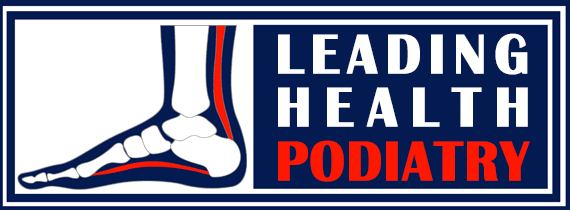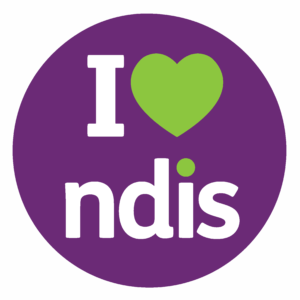The Feet & Legs In Cerebral Palsy
Understanding Cerebral Palsy and Its Impact on the Lower Limbs
Cerebral Palsy (CP) is a neurological condition that affects movement and motor function, typically arising in childhood. In Australia, CP affects approximately 1.8 children per 1000 live births. While CP can also involve cognitive impairments such as learning disabilities and speech difficulties, its impact on the lower limbs is significant. Children and adults with CP often experience joint problems, structural deformities, and difficulties with movement and walking, making podiatric care essential for managing these challenges.
How Movement Is Affected in Cerebral Palsy
Each individual with CP experiences movement impairments differently. The severity and specific impact on bones, joints, muscles, and tendons vary, and these effects can change over time. Some individuals may see a decline in mobility and muscle tone, while others improve with appropriate treatment, such as physical therapy. Regular assessments of foot and leg health help ensure that the best treatments and management strategies are in place.

Common Foot & Leg Problems in Cerebral Palsy
People with CP frequently experience specific lower limb problems, including:
Muscle Contracture
Overly toned muscles lead to shortening and contracture, making movement difficult and painful. This can affect flexibility and force individuals to compensate with altered movement patterns.
Toe Walking
Contracted Achilles tendons can prevent individuals from placing their heels on the ground, resulting in persistent toe-walking, which can worsen muscle contractures over time.
Flat Feet (Pes Planus)
Low muscle tone can contribute to flat feet, leading to muscle overuse, pain, and an increased risk of foot drop, where the foot drags along the ground while walking.
High Arches (Pes Cavus)
Excessive muscle contracture may cause high arches, reducing flexibility and shock absorption. This can result in discomfort, instability, and toe deformities like claw toes.
Clubfoot (Equinovarus)
A severe inward and upward turning of the foot can make walking extremely difficult and painful, affecting balance and coordination.
Leg Length Difference
A discrepancy in leg length can impact walking mechanics, leading to altered gait patterns that may cause pain and overuse injuries.
Leg Torsion
Twisting of the tibia or femur can make walking challenging and affect joint function, leading to secondary complications in the hips, knees, or ankles.
Hip Dysplasia
Poor hip socket coverage increases the risk of painful dislocations and restricted movement, often due to muscle imbalances around the hip joint.
Podiatry Treatment for Cerebral Palsy
Podiatrists play a key role in helping individuals with CP manage mobility, comfort, and quality of life. Treatment options include:
1. Physical Therapy & Stretching Programs
Stretching exercises help alleviate muscle contractures, while strengthening programs target weak muscles to improve movement and stability.
2. Custom Foot Orthotics
Orthotics provide support for flat feet, high arches, leg length differences, and general foot pain. They enhance stability and mobility, helping to alleviate discomfort and prevent further complications.
3. Ankle Foot Orthotics (AFOs) & Bracing
AFOs assist with conditions like foot drop by keeping the foot in an optimal position, improving ground clearance, stability, and overall gait.
4. Footwear Advice & Custom Footwear
Proper footwear is crucial for individuals with CP. Podiatrists recommend or customize shoes based on each person’s unique foot structure and mobility needs.
5. Referral for Additional Treatment
Where necessary, podiatrists refer patients for treatments such as Botox injections (to relieve muscle contractures), casting for clubfoot or hip dysplasia, and surgical interventions.
How NDIS Covers Podiatry for Cerebral Palsy
The National Disability Insurance Scheme (NDIS) provides essential support for individuals with CP, covering a wide range of podiatry services to enhance mobility and foot health. Coverage includes:
General Skin & Nail Care – Managing calluses, corns, and thickened toenails to prevent infections and discomfort.
Custom Foot Orthotics – Providing tailored support to address foot deformities and improve stability.
Ankle Foot Orthotics (AFOs) – Assisting with foot drop and muscle imbalances for better movement.
Footwear Modifications & Custom Shoes – Ensuring proper foot support and accommodating structural deformities.
Gait Assessments & Biomechanical Support – Analysing walking patterns and prescribing interventions to optimize function.
Accessing Podiatry Services Through the NDIS
To access podiatry services under the NDIS, participants need an approved plan that includes podiatry care under their support categories. Services can be funded under:
Improved Daily Living
Assistive Technology (for orthotics & AFOs)
Health & Wellbeing Support
NDIS participants can visit a registered podiatrist for an assessment, after which a tailored treatment plan can be created. Podiatry services are crucial for preventing complications, enhancing mobility, and ensuring overall foot health in individuals with CP.
Book an Appointment
Managing foot and leg issues in Cerebral Palsy requires ongoing care and expert intervention. If you or a loved one has CP and needs podiatric support, our experienced team is here to help. Contact us today to schedule an appointment and explore how NDIS funding can assist in accessing essential podiatry care.

